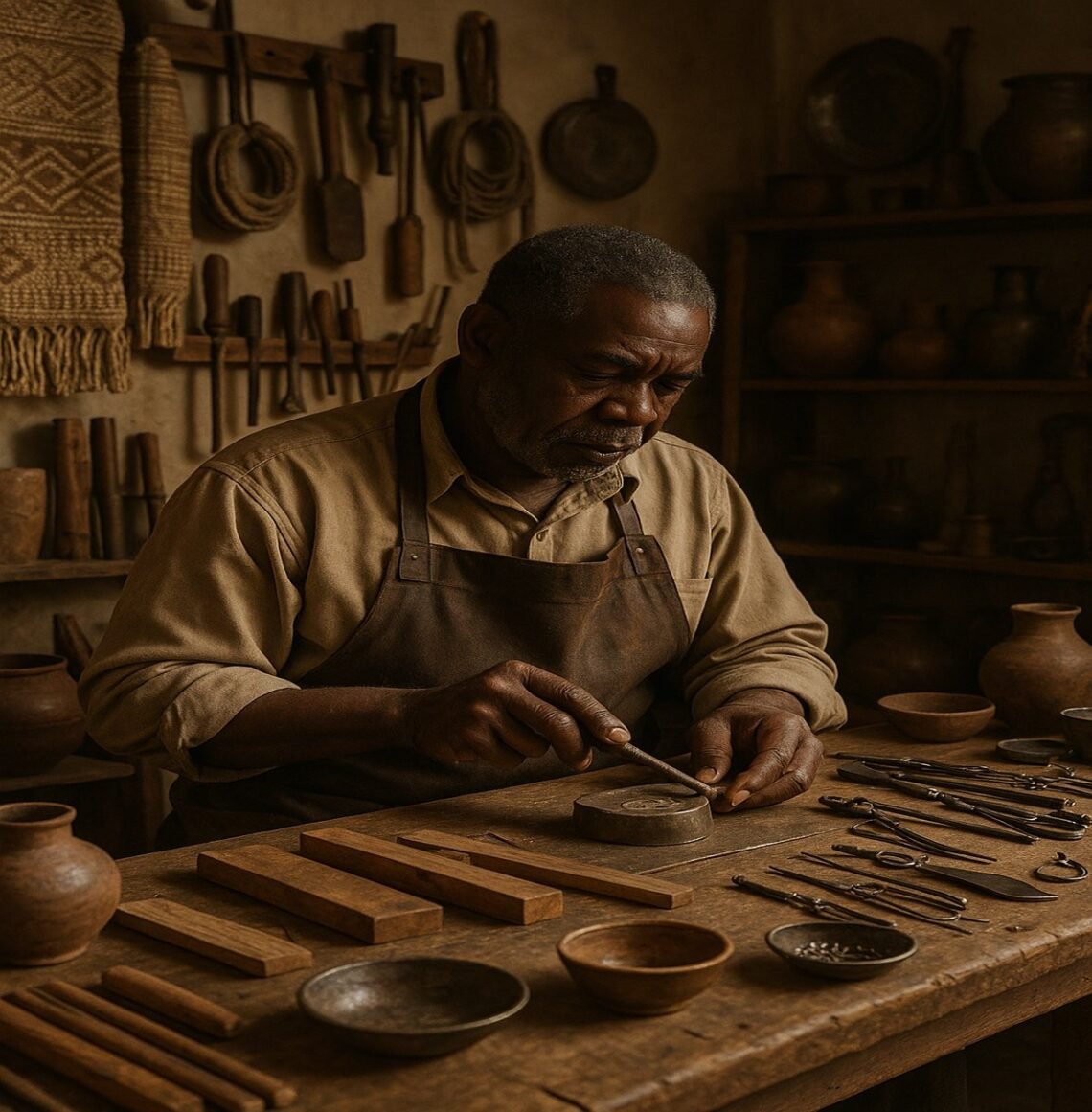Throughout American history, the hands of Black crafters have shaped not just materials, but the very cultural landscape of the nation. Their contributions, often overlooked in mainstream narratives, represent a profound legacy of artistry, resilience, and cultural expression.
From the echoes of pre-colonial African traditions to the vibrant contemporary studios of today, the story of the Black crafter is one of transforming functional objects into powerful statements of identity, community, and resistance.
The foundations of Black craftsmanship in America are deeply rooted in the rich aesthetic and technical traditions brought from the African continent. These skills were not lost during the transatlantic slave trade; instead, they were adapted and preserved.
During the era of enslavement, many Black artisans worked under immense duress, their skilled labor exploited to build the wealth of a nation that denied them freedom. Yet, even in these oppressive conditions, they found ways to continue their craft, often practicing cultural and religious traditions in secret through their work.
Craft as a Multidimensional Practice
Craft as Skill and Artistry
The work produced by Black artisans was not merely labor; it was a display of exceptional skill and innovation. These individuals were often pioneers in their fields, developing unique styles and techniques that set new standards for American craft.
Despite their undeniable talent, the contributions of these craftspeople were frequently ignored or wrongfully attributed to their enslavers or white employers, a historical injustice that is only now being corrected through dedicated scholarship.
Craft as Community Building
Craft served as a vital thread in the fabric of Black communities. The mobile nature of trades like blacksmithing and woodworking allowed enslaved artisans to travel between plantations, connecting disparate communities by sharing news and information.
Following Emancipation, the skills of Black crafters were instrumental in building the foundations of free communities. They constructed homes, churches, and schools, providing the physical and economic structures needed for these new societies to thrive.
Craft as Agency and Resistance
For many enslaved artisans, their craft provided a rare form of agency. The need for their specialized skills often afforded them a degree of mobility and limited freedom that was denied to others.
This platform was used for more than just economic gain; it was a tool for resistance. Craft became a medium for infusing personal ideas and cultural perspectives into their work, a subtle but powerful defiance of an oppressive system.
Notable Black Crafters Throughout History
Master Craftspeople of the Colonial Era
The colonial period saw the rise of master craftspeople whose work is still celebrated today. Potters like David Drake, an enslaved man in South Carolina, inscribed verses on his ceramic jugs, a bold act of literacy and self-expression.
In Tennessee, the enslaved craftsman Richard Poynor began a dynasty of chairmakers known for their elegant and durable designs. Meanwhile, Thomas Day, a free Black man in North Carolina, became one of the most successful cabinetmakers of his time.
Textile Artists and Fashion Pioneers
Textile arts have long been a cornerstone of Black craft history. Harriet Powers created extraordinary narrative quilts that chronicled historical events and biblical stories, leaving behind invaluable visual records of her time.
In the world of high fashion, Ann Lowe, a couture dressmaker, designed Jacqueline Kennedy's iconic wedding dress, though she received little public credit for her work. Similarly, Elizabeth Keckley, a formerly enslaved woman, became the personal dressmaker and confidante to First Lady Mary Todd Lincoln.
Metalworkers and Builders
The landscape of the American South is marked by the work of Black metalworkers. Philip Simmons, a Charleston blacksmith, created elegant wrought-iron gates that feature motifs from the Low Country and are still visible throughout the city.
Blacksmiths like Wilkes Flagg not only mastered their trade but also became community leaders, establishing churches and schools for newly freed people. Others, like Gabriel Prosser, used their position and mobility to organize resistance efforts.
Traditional Craft Forms and Their Significance
Many traditional craft forms carry deep cultural significance. The sweetgrass baskets of the Gullah Geechee people represent a direct link to West African rice-growing cultures, a tradition passed down through generations.
The celebrated quilts of Gee's Bend, Alabama, are known for their improvisational patterns and bold colors, reflecting a unique aesthetic that has influenced modern art. Similarly, the face jugs created by potters in Edgefield, South Carolina, are tied to West African spiritual rituals.
Contemporary Black Craft Collectives
The legacy of Black craftsmanship is not confined to the past. Today, a new wave of Black artisans is creating vibrant communities through contemporary craft collectives.
Spaces like the Sew Creative Lounge in Maryland and the Bronzeville Collective in Milwaukee provide sanctuary, community, and economic empowerment. They are hubs where makers can share skills, sell their work, and train the next generation.
The Living Legacy Today
A new generation of Black crafters is actively drawing inspiration from these rich traditions, reinterpreting historical techniques and narratives through a modern lens. They are reclaiming the erased contributions of their predecessors through both their art and their advocacy.
From furniture makers and textile artists to jewelers and potters, these contemporary artisans are ensuring that the spirit of ingenuity and resilience remains as vibrant as ever. Their work demonstrates that craft continues to be a powerful medium for expressing identity, fostering community, and engaging in vital social commentary.
Conclusion
The story of the Black crafter is a testament to the enduring power of human creativity in the face of adversity. It is a journey from a means of survival under oppression to a vibrant celebration of cultural heritage.
The contributions of Black artisans are woven into the very fabric of American art and design. As this rich history continues to be uncovered and celebrated, the future of Black craft traditions shines brighter than ever, promising new chapters of innovation and inspiration.





